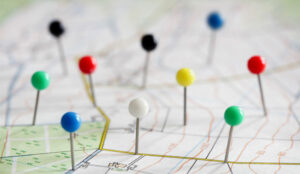Priyanka Tiwari introduces us to empathy maps and why they are beneficial to the contact centre and the customer experience.
As brands try to differentiate on customer experience, customer journey mapping is becoming more relevant than ever. Whether you are a marketer, a UX designer or a contact center executive, I’m sure that you have heard of the importance of journey mapping exercises.
Some of you may already be picturing a bunch of colorful Post-It notes on a whiteboard as you are reading this. In all their glory, customer journey maps are just one part of the puzzle.
There are various methods of mapping the customer experience and the actionable insights they offer to transform customer experience. Let’s first start with Empathy Maps.
What Is an Empathy Map?
Empathy maps describe what a customer goes through as he/she is trying to complete a task, in a product or brand agnostic way. In other words, empathy maps allow you to take a step back from your product and paint a picture of a typical customer’s experience — their needs, expectations, goal, hurdles, and behavior as they try to overcome those hurdles.
A typical empathy map has 4 main ‘observation-based’ sections – say, think, do, feel. This framework can be further evolved by adding two more ‘analysis-based’ sections: pains and gains. Open-ended empathy maps yield better results; however, to limit the scope of the exercise, it is better to limit it to a specific problem or a task at hand.
Drawing empathy maps reveals previously overlooked parts of the customer experience and helps find gaps in the current offering and future roadmaps. Empathy maps can also yield adjacent products and services that can elevate the usability of the product or simplify the task at hand.
Who Should Be in the “Metaphorical” Room?
Ideally, everyone who is responsible for measuring and elevating customer experience should participate in this exercise — from those who are building the product/service to address the task at hand, to those who are marketing it, selling it and managing customers post sales.
Participants can use a simple ‘sticky note and whiteboard’ approach or digital tools specifically created for such exercises. Participants can be in one room or on a conference meeting.
Have teams that work in different locations or time zones? They can complete the empathy map exercise separately and compare and consolidate results later on.
Basically, you can modify this exercise to suit your people and your style of working. Appointing a facilitator works when you are working with larger groups.
Some large organizations also have ‘inside consulting’ or design thinking groups that help facilitate customer experience mapping exercises.
What Does Success Look Like?
At the end of this exercise, you want to leave this metaphorical room with a completed empathy map that everyone agrees on! It may seem impossible, because the pains and gains from, say, a marketer’s point of view may be different from those of a customer service representative.
To get consensus, keeping the ‘observation-based’ sections high level and “analysis-based” sections neutral helps. A successful empathy mapping session would uncover product/service gaps that were previously hidden or overlooked.
What’s Next?
After empathy mapping comes customer journey mapping. Some teams may go ahead and develop experience maps and service blueprints – taking deeper dives into the customer experience. While others may take the results of the empathy map and translate them into products or services.
Either way, empathy mapping exercises are great for building empathy towards your customers as well as the people in your organization working on customer experience.
Author: Guest Author
Published On: 17th Oct 2018 - Last modified: 22nd Oct 2024
Read more about - Guest Blogs, Interactions















